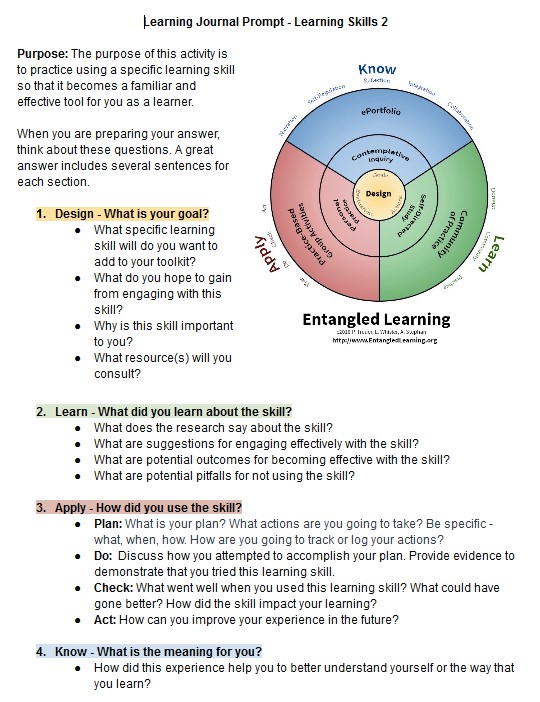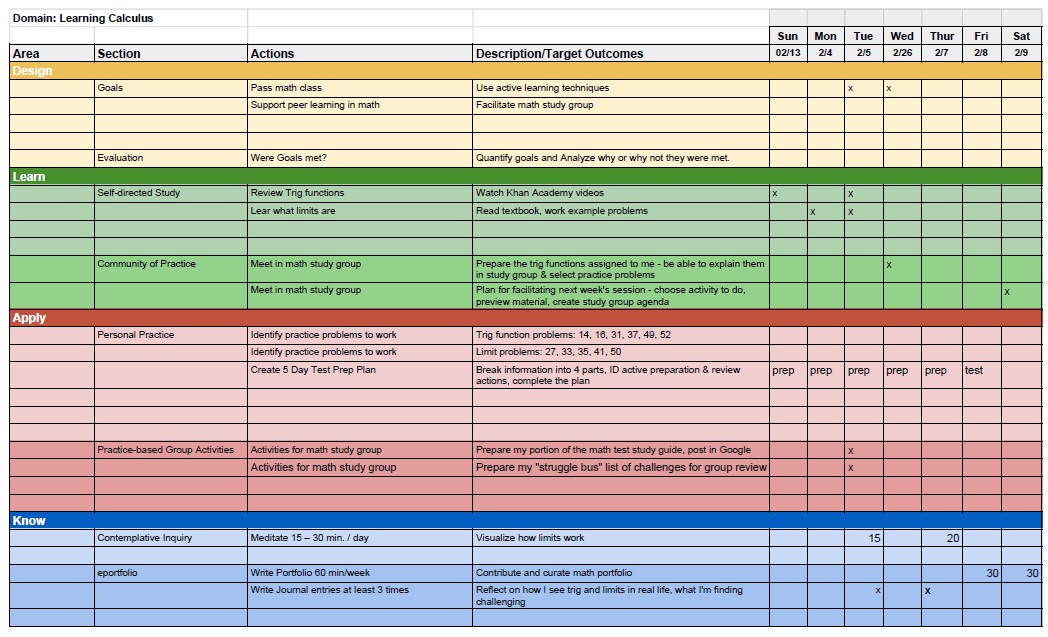Entangled learning – how to direct your own learning in a community context?
This article presents a new concept co-developed by Laurel Whisler (Assistant Director and Coordinator of Course Support Programs at Clemon’s Westmoreland Academic Success program) and Paul Treuer (retired professor at University of Minnesota Duluth and educational consultant). It invites the learner for an individual learning journey in a context of wider community. It structures a process to organize one’s own learning plan and to apply what we have learnt when working with peers.

Why did I choose this tool?
Entangled learning is a very good structure for one’s own development, and awareness of learning-to-learn competence. Laurel Whisler in her presentation explains:
“Why? To equip people for skillful, agile learning as they attempt to address challenges of utmost importance.”
How does this apply to being a trainer?
This model can support a person’s own learning. By going through its structure, you may be more aware of your own learning and better organize it.
Main content:
Entangled Learning (EL) is a framework for self-directed learning in which individuals collaborate in shared practices to grow, deepen, and document their knowledge. EL is a learner-centered educational pedagogy for the 21st century in which students, and their teachers, leverage and build social networks to deepen knowledge. Learners who are entangled not only find joy in their learning, but also they develop lifelong skills and relationships to direct their own deep learning.
Entangled Learning is a structure and a process for facilitating self-directed learning in which individuals document their learning to validate it and to share with others.
What this means for the learner:
– Design: Develop a Learning Action Plan with goals for learning, actions to take, and metrics to evaluate the effectiveness of their learning. Revise periodically as often as needed.
– Learn: Use a variety of study resources that match personal learning styles and preferences. Participate in one or more Communities of Practice (CoP) in a learning domain using multiple roles.
– Apply: Apply newly developed knowledge and skills to undertake issues, assignments, problems, or projects of interest by oneself or in a group.
– Know: Contemplates on what they know and what they want to know more about. Engages in practices that support depth, rigor, and validation of learning, documenting these in an ePortfolio to share with others their input.

Design your own plan, look at the sample:

Your learning plan.
| Area | Section | Actions | Description Target outcomes | M | T | W | Th | F | Sa | So |
| Design | ||||||||||
| Learn | ||||||||||
| Apply | ||||||||||
| Know | ||||||||||
Use e-portfolio as a good practice to show, share and discuss your learning outcomes.
Exercise:
Develop your own EL Action Plan to shape your self-regulated learning. Invite somebody to join this learning journey, with his/her own EL Action Plan.
- What resources and collaborative partners are available to you?
- What actions can you engage in each area?
- How can you evaluate the quality or effectiveness of your practices?
Make and design your own e-portfolio.
Reflection questions:
- What have you experienced by using this approach?
- How would you improve this process?
- What else would you like to experience in terms of learning to learn competence?




